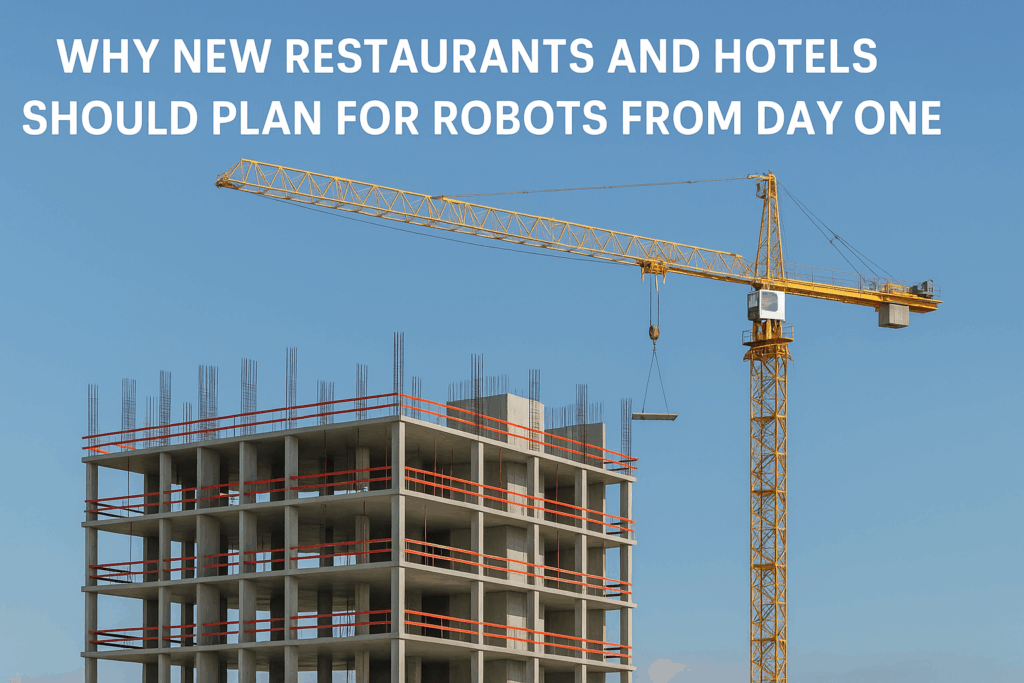When the internet first came out, buildings weren’t ready. Businesses had to tear down walls and add wires to get online. Eventually, new construction included internet wiring as standard.
Now we’re facing another major shift—this time with restaurant robots and cleaning automation.
Restaurant Robots Are Already Working
In today’s restaurants, you might see robots delivering food, guiding guests, or even running the payment station. Hotels are using robots to deliver towels and snacks. Warehouses and offices rely on robots to clean surfaces and empty trash cans—all while staff sleeps.
This isn’t future tech. It’s already in use. And businesses that don’t plan for robots today could be spending a lot more later just to keep up.
What Happens When You Don’t Plan Ahead?
When robots are added to older buildings, it usually means remodeling—moving walls, adding power, upgrading Wi-Fi, and creating charging zones. That’s expensive.
New buildings can avoid these issues by building with robots in mind. Just like we once wired for the internet, today’s smart construction needs to plan for robots in restaurants and hotels.
5 Things to Include in Robot-Ready Buildings
- Clear Navigation Paths Robots need to move easily. Design open spaces that let them travel between tables or rooms without getting stuck.
- Charging Stations Plan for a few small, out-of-the-way docking areas. These keep the robots running without draining your power grid.
- Smart Doors & Elevators Many robots can interact with smart technology to open doors or ride elevators. Make sure these systems are included.
- Strong Wi-Fi Robots communicate wirelessly. Without a strong network, they can freeze or crash. A robust signal is essential.
- Storage & Maintenance Rooms Just a small space is needed for supplies, recharging, or fixing minor issues. Include one near kitchens or utility rooms.
The Bottom Line
Restaurant robots and automation will soon be as normal as having Wi-Fi. They save time, reduce labor costs, and improve customer service. Buildings that plan ahead will enjoy lower operating costs and better efficiency.
The time to plan is before the foundation is poured.
About the Author:
Troy Forsberg is the owner of RobotLAB-Cape Canaveral and a former interior designer. She offers free consultations to help business owners and builders prepare for their future of automation in the early design phases.
Want help designing a robot-ready restaurant or hotel?
👉 Schedule your FREE consultation with Troy Forsberg today.
Call (321) 380-4078
